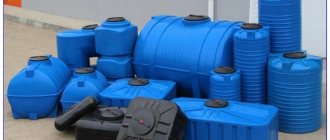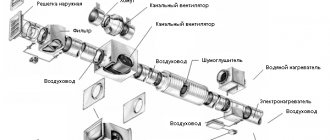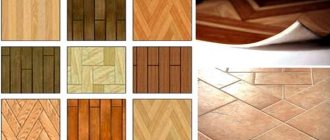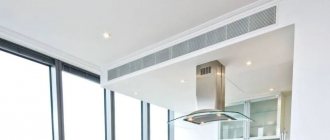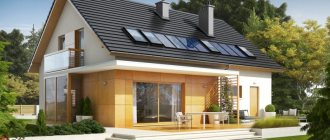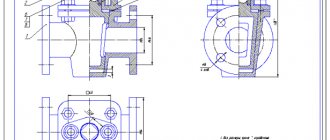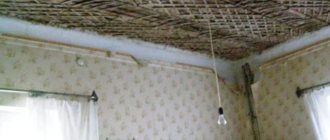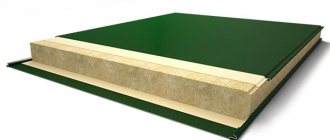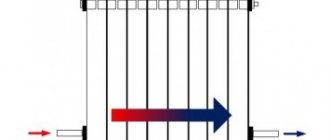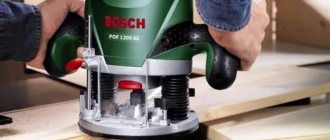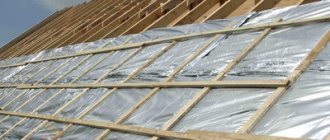Ondulin is a type of inexpensive roofing coating of organic origin. Initially appeared in France, and later on the Russian market.
It is in great demand in private construction due to its affordable price and ease of installation. It looks like classic asbestos-cement slate, which is why the second name of the material is Euroslate.
History of appearance
In our country, ondulin is perceived as a new material. This is wrong. It appeared immediately after the Second World War. The idea came to the mind of the Frenchman Gaston Gromier. After the hostilities, many homes were destroyed, many people became impoverished. Cheap building materials were needed, but a lot of them were required.
Ondulin responded to the requests presented. Despite the low cost, it had high qualities, looked nice, and could be used for a long time. In France, the company OFIC SA was created, which began production of ondulin. It was later renamed Onduline Group to be more recognizable.
At first, the distribution of the new roofing material was limited to Europe, which is why its second name “Euroslate” is associated. Later it spread throughout the world. In the Russian Federation, the Onduline plant was built in 1994 near Nizhny Novgorod.
Alternative roofing coverings
An alternative to an ondulin roof can be a roof made of galvanized iron, corrugated sheets, galvanized iron, roofing felt, tiles and the most important material of today - metal tiles.
A roof covered with galvanized iron looks neat and can protect against moisture and precipitation for many years.
Snow does not stay on a galvanized roof, so you can use thinner rafters for a galvanized roof and save money.
- Classic roofing felt is a star among roofing materials. It is easy to transport, inexpensive at all, easy to stack - it is in deserved demand. Now improved roofing felt of more modern brands has appeared, it has become even more popular. It is mechanically resistant to impacts, durable, has high elasticity - it is not for nothing that they cover the roofs of residential buildings, at least many Soviet-built houses are covered with roofing felt.
- Corrugated sheeting (corrugated sheet) is a high-quality modern material, pressed from rolled steel. Very strong, lightweight, easy to install, environmentally resistant and durable.
- Metal tiles are the king of the roof. Metal with tiles combines the advantages of both, eliminating their disadvantages. It looks better than just metal, and the properties are better than tiles. Provides ease of installation and durability, it is very popular among builders. Why is there a place for other materials like ondulin? The issue is the price.
- The tiles can be made from baked clay (ceramic tiles), thermoplastic composite, a solution of sand and cement (cement-sand tiles) or lime and sand with heat treatment (silicate tiles). The most famous clay tiles are made from plastic clays with a low melting point (sometimes a material such as fireclay is added to it). Classic tiles are fragile and heavy. The roof underneath should have a steep slope to allow water to flow down. Modern models can also be installed on flat roofs (10°).
- There is also slate , but, of course, it is no longer considered seriously. And in European countries it is prohibited for use due to asbestos. Although our sheds can still be covered with it. The manufacturer is also important here - now they manage to make it unevenly.
What is ondulin
The sheets look like wavy slate. But ondulin is a completely different material with different properties. The basis of the slate is an asbestos base impregnated with cement mortar. Euro slate uses cellulose as a base. It is impregnated with minerals and bitumen.
The characteristic wavy shape of the sheets Source dimdom.ru
It turns out to be a kind of composite. The cellulose layer maintains the shape of the product, and the bitumen provides waterproof properties. The wavy shape gives the sheets additional rigidity. In addition, this design prevents water from flowing into the vertical gaps between the sheets during rain.
Nowadays, polymer canvases impregnated with high-quality bitumen are increasingly used instead of cellulose. This type of euro slate has better properties and is more durable.
To give a decorative appearance, the material contains a mineral pigment, which gives ondulin different shades. Manufacturers offer a varied palette of colors, which helps you choose the right color scheme that will match the design of the building and the wishes of the customer.
Compound. What is the material made of?
Ondulin is based on several components.
Production technology involves high pressure on raw materials, which ensures high strength of the finished product. Ondulin is produced in several stages. It looks like this:
Cellulose is cleaned of any impurities and contaminants, mixed with water, modifiers and dyes. This substance is called pulp.
The pulp is fed to a special conveyor, where it is compressed into sheets of a given thickness, acquiring a wavy surface.
Then the sheets are treated on both sides with bitumen.
At the final stage, the finished products are stacked, packaged and provided with labels with information about the characteristics and properties of the material.
Properties of Euroslate
Like any other building material, ondulin has pros and cons that determine its use.
Positive sides:
- light weight - one sheet weighs about 6 kg, this makes it easy for even one person to work with it, plus, ondulin does not create a large load on the roofing system;
- attractiveness - the roof looks neat, bright, making a pleasant impression;
Samples of ondulin of different colors Source fotocdn.net
- water resistance - bitumen has practically no pores, does not allow water to pass through, its waterproofing qualities are very high;
- biological inertness - due to the fact that the liquid does not penetrate the bitumen, as happens with slate or tiles, moss does not appear on it during the entire service life of the roofing;
- simplicity and speed of installation - due to the lightness of the sheets of material, even one person can install them; delivering them to the work site does not cause difficulties;
- optimal thickness - the thickness of the sheets is 3 mm, this is enough for the necessary strength and water resistance;
- long service – a profiled bitumen coating can last for decades; if installed correctly, such a roof will not require replacement for about 50 years; the manufacturer usually gives a 15-year warranty;
- low cost - Euro slate is one of the most inexpensive roofing materials; it is often used in cases where they want to build budget housing;
- flexibility - thanks to this property, the sheets are not afraid of impacts, you can step on them and they will not suffer; softness simplifies installation and allows, if necessary, to slightly stretch or narrow the waves;
Ondulin has good flexibility Source obyava.ua
- strength - the roof is able to withstand the weight of thick snow cover, heavy rain, hail;
- sound insulation – a valuable quality is silence during heavy rain or hail, corrugated sheets and metal tiles make a loud noise under such influence, tiles and slate make a loud noise, Euro slate makes almost no sound; in addition, it reduces the noise level from the street, this is valuable if the house has a residential attic.
To understand what roof ondulin is and how durable it is, it is worth recalling that the manufacturer claims that this material, when carefully and competently installed, can withstand hurricane winds of up to 192 km/h. True, doubts arise whether the roof itself can withstand such a wind. We hope that no one will have to test the wind resistance of the roof of their home in practice.
Thick layer of snow on the roof Source spb-k.ru
As mentioned above, an ondulin roof has pros and cons, so it is worth dwelling in detail on the negative qualities of the material. Among them:
- poor resistance to frost - in severe cold, bitumen becomes brittle and can crack; in such weather it is better not to move the product or clean the snow on the roof; for this reason, it is better not to use the coating in northern regions, where very low temperatures are common in winter, especially if they last for a long time;
- flammability - resins and cellulose are flammable substances, so some owners are afraid to use ondulin for fear of fire;
- fading - the color of the roof tends to fade over time under the influence of the sun; this applies less to the original ondulin and more to its analogues from other manufacturers.
The budget price of Euro slate can be considered both a plus and a minus. Some developers do not use this material only because they consider its use to be unprestigious.
The use of ondulin is limited to social facilities, including medical institutions, schools, kindergartens, and boarding schools.
When arranging roof connections to pipes, you need to be careful with bituminous materials, because they can leak from heat. The original Onduline has a formulation that allows it to withstand temperatures greater than 100 degrees Celsius, but not higher than 250 degrees. Therefore, the sheets are not laid close to the pipes, leaving a gap; the junctions are closed with special elements made of non-combustible materials or metal.
Arrangement of a reliable connection of the roofing covering to the chimney Source stroyfora.ru
There are often statements that ondulin is short-lived and becomes unusable after 10-20 years of service. This is wrong. The fault is poor-quality installation, saving on lathing or buying fakes.
A detailed analysis of the shortcomings is important for understanding what ondulin is and what it is made of. Comparing its advantages and disadvantages helps to understand whether this material is worth using at all.
See also: Catalog of companies that specialize in roofing materials and related work
Comparing ondulin with other materials
In order to fully evaluate its pros and cons, and make a decision whether to take it or not for roofing, let’s compare its performance characteristics with other roofing materials.
Slate
Slate is made from slate, a mixture of asbestos and cement. High strength material. It is still used in the private sector for covering the roofs of small residential buildings, garages, sheds, and as fences. In European countries, its production is prohibited due to the harmful effects of asbestos on human health. In Russia, such a ban does not apply. Manufacturers have learned to coat slate with various coloring compounds that prevent the spread of asbestos dust.
Among the advantages of slate:
- durability (service life can reach 100 years);
- does not heat up under the scorching sun, unlike ondulin;
- affordable price;
- resistance to moisture, wind, frost;
- The roof element can be replaced if necessary.
The disadvantages of slate are its heavy weight and toxicity.
Therefore, in comparison with ondulin, slate wins in terms of service life and low heat transfer, but loses due to its toxicity, complexity of installation at high altitudes, and the appearance of chips upon impact.
Flexible tiles
A flexible or soft roof can be a real alternative. It can be designed in the form of bitumen shingles, membranes, mastic compositions or rolled material. The raw materials used are fiberglass, bitumen with various additives and additives, which will determine the quality.
The welded material provides a good level of water resistance and ease of installation. The service life can reach 35 years. This option is much better than ondulin and has a large selection of colors.
Its only drawback is the high price.
Corrugated sheet
When a home owner is faced with the question of choosing between ondulin and corrugated sheeting, it is important to consider the following criteria:
- Weight. Corrugated sheet metal is much heavier and requires a high-quality rafter system and the pouring of a reliable foundation.
- Fire hazard. According to this indicator, corrugated sheeting definitely wins. It does not burn, it is convenient to attach it to the outlet areas of chimney pipes. Bituminous material - on the rest of the roof.
- Noise insulation. Here the situation is the opposite. The sound of rain and wind is not heard on the ondulin coating. On metal sheets the noise will be very noticeable. For mansard roofs, additional sound insulation will have to be installed.
- Installation speed. It is easier to work with a bitumen base. The sheets are flexible, they are easier to cut and check whether the workpieces fit or not. They are convenient for covering even complex types of roofs. The corrugated sheet must be cut carefully, and the cut areas must be treated with anti-corrosion primer.
- Color spectrum. Corrugated sheeting is available in a variety of colors (blue, white, yellow). Popular options include imitation wood, stone, and brick. Bituminous material is limited in colors.
In terms of service life, corrugated sheeting is not much superior.
For the roofs of outbuildings, ondulin is quite enough; for the roof of a residential building with a wood-burning stove or boiler, it is better to choose corrugated sheeting.
Metal tiles
Metal tiles have similar properties to corrugated sheets. It just comes in more compact sizes and looks much more aesthetically pleasing. It will last many times longer than ondulin. Requires compliance with installation technology, experience, knowledge, and the availability of special fixtures for fastening. This is definitely the best option for the roof of a private house, summer house or cottage, although it is expensive.
The table below compares ondulin and other roofing materials according to a number of technical characteristics.
| Ceramic tiles | Polymer sand tiles | Cement-sand tiles | Metal tiles | Bituminous (soft) tiles | Corrugated sheets (type Ondulin) | |
| Roof type material | Fired clay + dye | 70% quartz sand + 29% binder polymer + 1% dye throughout the material. | Quartz sand + binder cement + dye | Metal 0.5 mm thick + protective coatings several tens of microns thick | Fiberglass impregnated with bitumen | Fiberglass impregnated with bitumen |
| Weight 1 m² | from 40 kg | 22 kg | from 40 kg | 4-6 kg | 4-6 kg | 3-4 kg |
| Thermal conductivity | Low, considering the properties of the material and its thickness (about 1 cm). Serves as a good thermostat. Minimal condensation formation. Optional use of thermal insulation. Recommended if you have an attic. | The lowest, taking into account the properties of the material and its thickness (1 cm). Serves as an excellent thermostat. Minimal condensation formation. Optional use of thermal insulation. Recommended if you have an attic. | Low. Serves as a good thermostat. Minimal condensation formation. Optional use of thermal insulation. Recommended if you have an attic. | Very high. Promotes excessive formation of condensation. Requires additional thermal insulation. The requirements for the quality of roofing films have been increased. | Low, because bituminous shingles are attached to a solid wooden deck (OSB board). | Medium (with a thickness of about 5 mm). |
| Soundproofing | Excellent, thanks to the properties of the material and massiveness. Recommended if you have an attic. | Excellent, thanks to the properties of the material and massiveness. Recommended if you have an attic. | Excellent, thanks to the properties of the material and massiveness. Recommended if you have an attic. | The worst. It rattles from the impact of raindrops and hail, which is unacceptable in attic spaces. Requires additional sound insulation. | Good due to the softness of the material and in combination with the peculiarity of the wooden roof structure. | Average. The softness of the material muffles the noise of rain or hail. |
| Water absorption | up to 6% (glazed about 1%) | 0.06% | 3-6% | 0% | more than 10% | up to 8% |
| Frost resistance | 100 cycles | at least 200 cycles | 50 cycles | at least 200 cycles | 50 cycles | 25 cycles |
| Resistance to aggressive environments | Stable | Maximum stability, because crystallized quartz sand, of which 70% the material consists, is chemically absolutely inert. | Moderately stable due to the chemical activity of cement-sand mortar in both acidic and alkaline environments. | Unstable. In places where the protective coating is damaged, the process of oxidation and destruction of the metal occurs. | Weak resistance | Weak resistance |
We can come to the conclusion that ondulin is a budget method for arranging a roof in private construction with the possibility of further improvement with another material.
Original Onduline products and alternative manufacturers
The high demand for lightweight and durable material has led to the emergence of many analogues. As a rule, they are inferior in quality to original products, but are cheaper.
In order not to run into a fake, you need to understand the differences between real ondulin, what kind of material it is, when you can use alternative brands of Euro slate, and when you shouldn’t. Please note that good stores never hide a specific manufacturer, so it is better to find out the details from a consultant.
The sheets of the original ondulin have a size of 200x94 centimeters and a thickness of 3 mm. Their weight is 6 kg. Number of waves: 10 pieces.
The original ondulin is durable, you can walk on it on the roof, and thanks to its roughness there is no danger of slipping.
Surface structure of ondulin Source ytimg.com
Spears usually have only 9 waves, but they weigh 9 kg, sometimes even more. The quality is inferior to the original.
If we take manufacturers with characteristics that are not much inferior to Onduline, then we can highlight the following brands:
- Aqualine is a material from a company from Belgium. The base consists of 21 layers of cellulose, the fibers of which are arranged perpendicularly. This gives the sheets additional rigidity while maintaining flexibility. It is mainly used when working on roofs with complex geometry.
- Butuvel is a German company. The sheets can be used for roofs and wall cladding. The product is guaranteed for 15 years.
- Bioline – products from Ukraine. Now it's hard to find it here. For color fastness, good German dyes are used, so the color of the roof remains bright and rich for many years.
- Gutta is a manufacturer from Switzerland. A distinctive feature of the sheets is good resistance to ultraviolet radiation and chemicals. The paint does not fade in the sun for a long time.
Roofing material Gutta Source tildacdn.com
Release forms
Ondulin is a modern, technologically advanced roofing material that is used to create a stable, moisture-resistant coating . It is a product and protected trademark of the French company, which began its production more than 70 years ago.
This roofing covering, which is made on the basis of cellulose impregnated with purified bitumen, came to the Russian market only 10-15 years ago, after which it earned the trust of professional roofers and developers. Currently, the following types of this material are distinguished:
- Ondulin
The classic ondulin coating is a rectangular sheet with a wavy profile, the size of which is 200x950 cm. It has high moisture-proof properties, light weight and a guaranteed service life of 15 years.
Installation of classic ondulin is carried out in the same way as laying traditional slate. The wave height of this material is 36 mm, and the sheet thickness is 3 mm. The cost of 1 m2 of such a roof will be 300-350 rubles.
Classic ondulin
- Onduvilla
A product of collaboration between French and Italian designers. This roofing material is a symbiosis of tiles and ondulin. Onduvilla is cut corrugated strips, the wave height of which is 36 mm, width 40 cm, length 104-106 cm.
Onduvilla is laid in tiers with a slight overlap, its waves imitate Mediterranean-style ceramic tiles. Such a covering with an area of 1 m2 weighs only 4 kg. Onduvilla costs from 410 rubles per 1 square meter.
Onduvilla is a mixture of tiles and ondulin.
By adding natural pigments, the material is painted in the required colors. Standard colors include black, brown, green and red.
Ondulin coating tends to fade under the influence of ultraviolet rays, and the destruction of the pigment occurs unevenly. To update the color of the roof, a primer is applied to it and then painted.
Comparison of the characteristics of ondulin with other roofing materials
Interesting! Initially, the roofing material ondulin was developed as a means for repairing metal or tile roofs, which does not require dismantling the structure. Lightness and excellent moisture-proof properties made it possible to lay this material over the old roofing pie. During its operation, it began to be used to cover roofs independently.
How to choose bitumen slate
The following requirements apply to roofing material:
- long-term operation;
- waterproof;
- convenient and simple installation;
- reliability;
- preservation of paint or exterior coating.
When choosing ondulin, carefully examine the material. The cut should be dense, uniform, and there should be no delamination. Also look at the uniformity of color across all sheets in the batch you purchase. Blisters, cracks, and wrinkled edges are unacceptable.
Ondulin defects Source krysha-expert.ru
Usable area of Onduvilla sheets
The leaf size of Onduvilla is much smaller than that of Ondulin. The length is 106 cm, width - 40 cm, usable area - 0.31 m2. The area of the slope is divided by the usable area of Onduvilla, and a small reserve for losses and pruning (about 5-10%) is added to the resulting figure.
One Onduvilla shingle costs at least 106 rubles.
Taking into account the overlap, the price is from 342 rubles per m2.
Types of bitumen sheets offered by Onduline
The company's products include several models that differ in a number of characteristics. Let's look at their features.
Ondulin Smart
Smart sheets are used for roofing and wall cladding. To prevent moisture seepage, a special lock is used at the overlap points. Thanks to the technology, the end overlap is reduced to 12 cm, which helps to save material. Cost from 270-280 rubles per square meter.
No specific skills are required to figure out how to cover a roof with Smart ondulin - the sheets have pre-marked places for fastening, which makes installation easier by saving time on marking. The main thing is to be careful in your work and carefully follow the instructions. Sheet size 1.95×0.95 m, weight 6.3 kg. The product has 10 waves with a height of 38 mm and a pitch of 95 mm.
Appearance of the Ondulin Smart brand Source stroy-gid.su
Production technology
The main raw materials for its production are cellulose fibers and paper waste. Pulp is formed from paper raw materials, water and additives, which is heated at a temperature of +120 degrees. dried and compressed. The shape is given by corrugation. Next, they are cut into sheets of standard sizes. The resulting sheets are wavy in shape. Finished products are painted in various colors, allowed to dry and immersed in clean molten bitumen with polymer additives. The sheets are cooled to a temperature of +60 degrees, allowed to cool for several days and gain strength in warehouse conditions.
Additional articles:
- Roof gutters
- How to assemble a chimney from sandwich pipes
Nuances of installing ondulin
Before starting work, you need to draw up a plan in order to understand exactly how much ondulin will be needed and how to properly lay it on the roof. To do this you need to know in advance:
- roof area;
- its angle of inclination;
- the length of all connections to vertical surface elements;
- number and length of connections to chimneys and ventilation pipes.
Accurate calculation means saving material. A situation where at the end of the work several sheets are missing is also unacceptable. It may happen that later it will not be possible to find the desired shade of color and the additionally purchased euro slate will stand out from the background of the other sheets.
Installation
In order for the roof to serve for a long time, and not to become unusable after 10-20 years, all work must be carried out extremely scrupulously, so you need to have an idea of how to lay ondulin.
First of all, prepare the base on which the bitumen slate will be laid. The joists must be set with minimal deviations. If the plane of the sheathing goes in waves, then this will be clearly visible on the ondulin.
How to correctly calculate the required amount of ondulin
One way to calculate the quantity: divide the total roof area by the working (useful) sheet area.
When performing calculations, it is important to take into account a number of features:
- To ensure that there is less material leftover, you need to calculate in advance the dimensions of the vertical overlaps, which depend on the selected angle of inclination of the slope and can change upward.
- It is not recommended to install narrow parts in the top row of the roof, since some of the sheets will cover the ridge element, and visually this will not look very aesthetically pleasing.
- If you plan to install a simple roof, you need to add a stock of 10% to the number of sheets; for complex roofs, you need to take a stock of sheets of 20% more.
- For fastening valleys, ridges and other difficult areas, it is better to purchase ready-made elements from the same material.
To accurately determine how many sheets are needed for the roof, you need to know the usable area of the material. Standard dimensions of ondulin are 2*0.95 meters with 10 waves. The sheets are attached with an overlap, which means that there are 2 waves along the edges. At the top the overlap is usually made from 14 cm, at the bottom - from 7 cm outwards.
Taking into account the roof slope, the useful sheet area will be as follows:
- 1.29 sq. m – at a slope level of 5 to 10 degrees;
- 1.54 sq. m - from 10 to 15 degrees;
- 1.56 sq. m - over 15 degrees.
A suitable option for the usable sheet area is multiplied by the roof area and the desired result is obtained.
Video description
See all the nuances of high-quality installation of Euro slate in this video:
Fasteners
The question arises as to how to attach the ondulin. Regular nails or roofing nails with galvanized heads will not work. It is necessary to use special self-tapping screws with plastic caps that protect the fasteners from corrosion. Their caps are wide to securely press the sheets. If the cap is small, the ondulin will easily be blown off by the wind.
Self-tapping screws for fastening ondulin Source berezka-stroi.ru
The screws are removed with a regular hammer. It is also permissible to use roofing screws, which are used to fasten corrugated sheets or metal tiles. But in this case, you will need a screwdriver for fastening.
There are craftsmen who believe that it does not matter how the ondulin is attached to the sheathing. This is the wrong approach. Firstly, nails are driven only up the wave. You can't go down - the roof will let water through. You need to hammer in the fasteners in 4 rads, without missing a single wave. Start from the edge where the ondulin joins other sheets, carefully straightening the sheet. The inner 2 rows of nails are driven in a staggered pattern.
The main thing in how to attach andulin slate correctly is accuracy. The nails must be driven exactly into the crest of the wave, strictly perpendicular to the plane of the roof. It is equally unacceptable for the nail to both crush the material and leave a gap between the head and the surface of the wave. Make sure that the cap is in good condition - it should not have cracks or chips. Such fasteners should be replaced.
How to cut ondulin
NOTE!
It is strictly not recommended to use an electric jigsaw for cutting ondulin due to the fact that its teeth are too small and they will become clogged with cellulose .
During the installation process, ondulin often has to be cut, sometimes into small pieces, in order to lay the material around the chimney pipe or other difficult areas of the roof. It is often necessary to cut off the excess if the overlap is excessive.
Cutting a sheet with a stationery knife
Remember: the ondulin is cut from the “facade”, that is, the front side, the top of which is laid towards the sky. And they also cut not along the wave, but along the depression between the waves.
How to cut ondulin? The cutting technique is as follows:
- An incision is made . That is, cutting begins with making a cut from the front side. Then the sheet is folded, turned over, and it is cut further.
- How to cut ondulin? stationery knife is perfect for these purposes . It allows for smooth cutting without leaving “crumbled” edges, everything will be clear and even.
- This is if cutting along the sheet is meant. If it is across, then there is nothing better than a classic hacksaw for wood. But there are certain features here. This cutting also occurs on the front side. But you need to make high-quality markings first in order to cut exactly along the line.
- If you need to cut a lot of sheets, you can use a “circular saw,” that is, a circular saw. A circular saw gives a smooth, regular cut.
- As for cutting with a grinder, you can use it, but be careful. It is necessary to ensure that the edges of the cut do not melt, since when cutting with a grinder at high speeds, due to friction, the temperature of the material at the place of the cut from the circle increases.
CAREFULLY!
If during operation the teeth of the circular saw become clogged with cellulose fibers, then to clean it you will need to make at least one cut in wood . You should not cut ondulin in the sun. It is necessary to do this in the shade, and best of all - in a room where it is cool.
Common mistakes
Onduline provides a 15-year warranty on the material. On YouTube you can find a large number of videos showing the depressing state of ondulin 10-20 years after installation. It's not the material that's to blame. There may be several reasons:
- Purchasing cheap analogues. The savings will be small, but problems may begin after several years. To avoid this, it is better to take the material from official representatives of the manufacturer. Their consultants always help with calculations and tell you what additional elements are required.
- Poor installation, incorrectly installed rafters, sheathing. Although it is often written that ondulin is easy to install without experience, this should not be done. It is much better if the installation is carried out by a team of professionals. Installation costs will be repaid by the long service life of the roof without the need for repairs or alterations.
- Carelessly made connections to pipes, poor-quality installation of ridges, valleys, gable elements, lack of filler in cracks. Such work requires qualifications, care and experience. It is better if it is done by a specialist. This especially applies to connections to chimneys and ventilation.
An example of careless laying of sheets: crumpled waves, lack of filler, incompletely driven nails Source ytimg.com
Buyer Help - Roofing Calculators
The easiest way is to calculate the number of sheets for a roof with two slopes. But if we are talking about a roof with a complex configuration, it is better to double-check the numbers. To do this, you can use an online calculator developed by specialists. The tool is located on the manufacturer's website:
For maximum accuracy, it is better to have a design of the future roof at hand or at least know its dimensions. In the online form, you must indicate not only the dimensions of the slopes, but also other parameters: slope angle, length of additional elements, presence and number of pipes, need for roof insulation. Material consumption will be calculated automatically.
From the page of each calculator you can go to the pages of other tools. This is convenient if you want to “try on” different colors and types of roofing, estimate the cost of several options and choose the optimal one. Please note that the final price will depend on your location and transportation features. Please contact your local dealer for this information.
Source
Ondulin roof care
In order for a roof with ondulin installed on it to last more than 15 years, it is necessary not only to perform high-quality installation, but also to not forget about caring for the roof in the future. Just 4 simple rules will increase the durability of the material by at least 3 times. So:
- inspect the condition of the coating 2 times a year: before the start of winter and after it ends;
- tree branches should not touch the roof, trim the crowns in time;
- regularly clean the ondulin from debris and fallen leaves, this work can be combined with an inspection; you can sweep away the debris with an ordinary broom or brush;
- After cleaning the roof itself, clean the gutters; water should flow out of them freely.
Advantages and disadvantages: dispelling myths
Corrugated bitumen sheets in their modern form have been produced all over the world for more than sixty years. And at the same time, the characteristics of ondulin tiles are still contradictory among different manufacturers, which completely confuses buyers.
Plus, the domestic market, unfortunately, is filled with all sorts of fakes, which also sometimes discourage people from switching to anything other than the ubiquitous, but proven over the years, metal tiles.
Let us list the main disadvantages of ondulin, about which there is so much noise:
- Flammability of the material . Unfortunately, so far they have not found a way to protect cardboard impregnated with bitumen from open flames so that it does not burn at all.
- Rough surface . Ondulin often collects dust and debris, which over time even becomes overgrown with moss. If you don't remove it, of course. Although there are certain brands of ondulin from which the dirt more or less comes off on its own.
- Loss of pigment . This happens with cheap or fake ondulin. There are also banal factory defects, when the sheets are simply unevenly painted.
- Limited color range . Yes, there are four main shades in total, which, however, are in complete harmony with most types of facade finishes.
- Fragility . You can’t walk on ondulin, that’s a fact. It is especially dangerous to walk on it in winter, when the edges of the sheets can even crumble under pressure. And in the heat, the coating simply softens and risks losing its geometry. During roofing work, paths are specially installed for this purpose.
But there is another problem that may arise during operation - sheets blown off the roof by strong winds. Any solid sheets have a certain windage, and they are also torn off, like ordinary slate and metal profiles.
To fully understand all these points, we suggest you watch this video review of the disadvantages of ondulin:
But let's also note the positives! The so-called Euro slate is famous for its properties such as low water absorption , weather resistance , and unattractiveness to bacteria and fungus . Bituminous slate tolerates acids , alkalis , gasoline and industrial gases , which certainly cannot be said about most modern roofing materials.
Also, ondulin sheets are produced with a length of no more than 2 meters and a weight of about 6 kg. Note that this is two times lighter than traditional slate, which, by the way, is now actively prohibited in Europe, and almost 20 times lighter than natural tiles:
Ondulin is also valued for its noise-insulating properties . In the rain, it is quite comfortable to be under such a roof, because you can hardly hear anything. And it cannot be compared with the roar of drops on metal slopes.
Another nice advantage is flexibility . If the radius of curvature is small, then such material can be easily laid even on a curved surface. But as for strength, ondulin can really break through hail, that’s true. Especially the one that is several centimeters in diameter, because this one will even make holes in metal sheets. But a small one won’t be able to hurt.
Quality issues: how not to run into a fake
As for color, you've probably seen reviews about how ondulin fades. Moreover, for some users this happens already in the third year, while for others the roof has been pleasing with bright colors for the second decade. What is the reason? The fact is that it all depends on what price segment your purchase is in and who its manufacturer is.
If the ondulin is of high quality, its coloring will not be superficial, but deep, which you can easily determine by the cut. Moreover, if you see ondulin that is too bright or has an unusual, unnatural color, then it is most likely a fake, released in a limited edition.
This is the secret: high-quality ondulin does not fade due to the fact that it is painted before being impregnated with bitumen, and these are always natural colors. Available in three main solutions: red, brown and green.
In addition, while still in production, sheets of branded ondulin are coated with a protective and decorative layer based on special polymers and light-resistant pigments. Additionally, the surface is protected with highly resistant acrylic to protect the sheet from ultraviolet radiation, wind and rain. And good-made ondulin does not even retain dirt from the atmosphere.
Therefore, if the coating you purchased is definitely not a factory defect, but from a budget series, it will fade evenly and is hardly noticeable to the eye. Which will not affect the overall appearance of the house at all. And this is much better than the situation with metal roofs, where the paint sometimes comes off in rags.
Let's tell you a secret: if you are worried, do not buy green ondulin, which fades most noticeably, becoming gray. Brown is much better - it lightens evenly without losing its beautiful appearance.
It is also important not to confuse the fading color of the roof with its dusting. Most likely, the shade changed in the summer, but the autumn rains will pass and the color will be restored, because... the dirt will simply wash away.
By the way, some people are attracted by ondulin because it has a matte texture, because it is really closer in appearance to a natural coating than the cold sheen of artificial metal tiles.
And to understand whether problems will arise with ondulin, and whether it is accidentally a fake, just look carefully at the cut of the sheet:
Fire safety: does Euro slate really burn like a match?
Spontaneous combustion of ondulin occurs at a temperature of 200-300 degrees Celsius. Of course, this is not the most fireproof material, and in an open fire it will burn along with the wooden rafter system quite quickly. But whether it is so important how the roof will withstand fire when the whole house is engulfed in flames is another question.
Although, if there is a chimney on the roof that is capable of throwing sparks, this feature plays an important role. We hasten to please you: high-quality bitumen contains special additives that allow the roof not to burn, but only maintain the fire, and it is even difficult to set fire to such a roof.
On the other hand, according to experienced firefighters, a metal roof serves as a source of fire and spreads flames throughout the entire structure. But cheap euro slate, which is classified as flammability class G-4, burns quickly, but thereby releases the flame out and reduces the air temperature in the building itself.
Manufacturers claim that high-quality ondulin can easily withstand both Siberian frost and hot tropical sun. Here is a very interesting video that compares the properties of branded ondulin and metal tiles. Impressive!
To summarize: high-quality ondulin is not only easy to install, but also reliable, retains its appearance and lasts quite a long time. In winter, such a roof retains heat and in summer protects from heat.
Briefly about the main thing
If we briefly consider what ondulin for a roof is, then it is a reliable composite material consisting of a base impregnated with bitumen resins. It is made of canvas made of several layers of cellulose fibers. For strength, the fibers of adjacent layers are directed perpendicular to each other.
Ondulin, with proper installation and simple maintenance, can last up to 50 years, which is proven by the long-term operation of houses with a similar roof.
The main advantages of the material are lightness, flexibility, water resistance, bioinertness. At the same time, Euro slate is a flammable material; the paint fades over time.
Ondulin is sensitive to the quality of installation and requires special care in the preparation of rafter structures and sheathing. It is better to entrust the installation work to experienced specialists. To ensure that ondulin does not fail during service and is durable, installation must be carried out strictly according to the instructions.
Ratings 0
Table of the main physical and mechanical characteristics of ondulin
| Characteristic | Norms and standards | Unit | Magnitude | Notes |
| Strength | NFQ 03-054 st.OFIC | kPa kPa/m | >1800 to170 | – |
| Breaking load | – | kg s/sq.m | 960 | The rafters and sheathing are destroyed, not Ondulin |
| Modulus of elasticity Emax Emin | DIN 53457 | kg s/sq.m kg s/sq.m | 8,160 3,940 | – |
| Thermal conductivity 35° 40° 50° | DIN 52612 | Kcal/mh°C Kcal/mh°C Kcal/mh°C | 0,19 0,20 0,195 | Low thermal conductivity compared to design value |
| Thermal resistance | DIN 5212 | °C | up to 110° | Properties do not change, shape and elasticity are maintained |
| Noise insulation | DIN 52210 | dB | 40 | – |
| Frost resistance | DIN 52103 DIN 52104 | freeze/thaw cycles in water | 25 | No changes in appearance or damage were found. Frost-resistant slabs. |
The use of ondulin for a roof with a slope angle of less than 10 degrees is undesirable. It will be necessary to attach a continuous sheathing and increase the overlap of the sheets during installation.
Installation option on an old roof
When covering the roof slopes of buildings, it is possible to preserve the old foundation, from which the dirt is first removed. The sheathing is placed on top of the trim, and points are provided along the end edges for laying the wind board. Laying sheet elastic ondulin covering without a frame is prohibited, since due to the lack of an air gap, ventilation conditions are violated. Roofs with slopes made of asbestos-cement slate are well suited for attaching the sheathing to nails: the depressions between the waves allow you to lay the frame beams.
Dimensions of standard sheet for roof and other structural elements
A key feature of ondulin is the mandatory standardization of standard sizes. Therefore, regardless of the manufacturer, the sheets are the same size, which allows even inexperienced builders to accurately calculate the amount of material. The following parameters apply here:
| Characteristic name | Units | Sheet types | Width x Length |
| Sheet sizes | m | SMART | 0,96×1,95 |
| COMPACT | 0,76×1 | ||
| DIY | 0,75×2 | ||
| Sheet thickness | mm | SMART | 3 |
| COMPACT | 2,6 | ||
| Wave height (profile) | mm | 36-38 | |
| Wave step | mm | 95 | |
| Number of waves per sheet | — | SMART | 10 |
| COMPACT | 8 | ||
| DIY | 8 |
Square. Upon purchase, the area of the ondulin sheet is 1.9 m2 . It should be taken into account that the material is laid overlapping, so the usable area is reduced to 1.6 m2 .
Dimensions of roof elements
| Useful | |||
| Skate | Design of the longitudinal joint of the slopes in the upper sections | 1000 | 850 |
| Endova | Creating a tight seal at the intersection of slopes in the lower areas | 1000 | 850 |
| Covering apron | Design of the junction of the slope with the wall | 950 | 846 |
| Tong | Finishing gables and roof ribs | 1100 | 950 |
| Nail diameter 3mm for ondulin | For fastening sheets and roofing trim elements | 70 | — |
Requirements SP, SNiP, GESN
Carrying out roofing work involves calculating all costs of materials, fasteners, equipment involved (if required), drawing up an estimate for the list of work performed.
All these points are regulated by GESN (State Elementary Estimate Norms). According to GESN, when installing the roof, the following must be documented:
- type, complexity, features of roofing;
- indicators of coefficients of various calculations (temporary, permanent load, strength);
- number of works performed;
- nuances of installation of valleys, ridge, gables (depending on the type of roof).
Strict compliance with GESN is necessary when constructing a capital facility of national importance or if the work is financed from the state budget. If this is private construction on a summer cottage, in the private sector with independent financing, then compliance with the GESN is recommended, but not mandatory.
According to current standards, installation work on ondulin flooring has its limitations:
- It is prohibited to use bitumen sheets to cover a roof that is in use, where residents will move or where lawns and flower beds are to be arranged.
- It cannot be done if the slope angle of the slopes is less than 5 degrees.
- Laying ondulin is prohibited if the sheathing does not meet the standards.
- It is also prohibited if equipment whose weight exceeds the maximum permissible load is placed on the roof.
- It is prohibited when communications are located near the roof, causing icing in winter.
- It is unacceptable to cover the roof with ondulin on a surface with a radius of curvature of up to 5 m.
- The use of the material is prohibited in the regions of the Far North, where the temperature in winter drops to -60 degrees.
- It is prohibited to cover an area exceeding 400 square meters. m in the absence of dividing fire zones.
You can familiarize yourself in detail with these and other standards governing the fastening and use of ondulin on the roof in SP 17.13330.2011 (updated edition) and SNiP II-26-76 “Roofs” (updated edition).
Additional items
To install ondulin on the roof, you must purchase the following:
- Special nails with colored heads, made of carbon steel, durable and airtight. There are 100 pieces in a package, diameter is 3.55 mm, the color of the head is matched to the color of the sheet (about 20 nails are needed for one sheet).
- Ridge for the roof edge. Its length is 100 cm, useful - 85 cm.
- Nipper for slope and pediment. Length - 110 cm, useful - 95 cm.
- Copolymer ventilation pipe material.
- Endova. Length - 100 cm, useful - 85 cm.
- Cornice filler for the gap between the sheathing and the sheet. Can be ventilated or unventilated. Made from foamed polyethylene. Length - 85 cm, thickness - 2.5 cm.
- Insulating tapes made of butyl rubber, aluminum. Width - 28 cm, length - 250 cm.
- Closing apron made of polypropylene. Length - 940 mm, package of 25 pieces.
Cost of ondulin roofing
The costs of installing an ondulin roof depend on the dimensions of the roof.
Table: how much does 1 m² of ondulin roof cost?
| Type of work | Unit | Price in rubles |
| Construction of the rafter system | 1 m² | From 300 |
| Laying vapor barrier | from 50 | |
| Laying insulation with a thickness of 150–200 mm | from 70 | |
| Laying waterproofing | from 40 | |
| Installation of counter-lattice | from 20 | |
| Installation of step lathing | from 50 | |
| Frontal board device | from 30 | |
| Treating sheathing and rafters with antiseptics | from 30 | |
| Installation of ondulin | from 200 | |
| Installation of connections to a wall/pipe | p.m. | from 160 |
| Installation of a ventilated ridge strip | from 270 | |
| Valley device | from 70 | |
| Installation of end strips | from 100 | |
| Installation of cornice strips | from 100 | |
| Hemming the cornices | from 200 | |
| Installation of drains (pipes and gutters) | from 180 | |
| Installation of a roof window | PC. | from 3200 |

